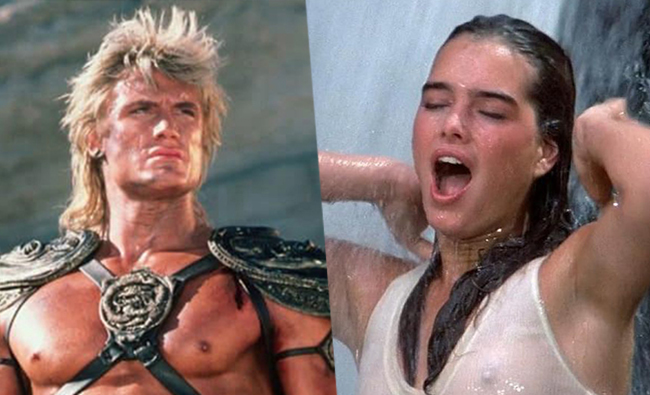Andy O’Flaherty takes a look back at the origins of Sega’s iconic mascot…
The original Sonic the Hedgehog JPN/US/EU boxartSonic the Hedgehog. Now there’s a name that stretches far beyond the realms of the video game medium. I guarantee that a large percentage of even non-video game players would instantly recognise him on sight. Indeed, even my 3 year old daughter, who has never played a video game in her life, knows who Sonic the Hedgehog is. Sadly, things have not been too great for Sega’s blue blur over the last…. well, couple of decades. A few good titles aside, poor quality releases, needless additional supporting characters and a general lack of focus on behalf of Sega have left fans disillusioned with the whole franchise, and many younger gamers today may look at the whole IP as one to avoid. The future may look brighter with the upcoming Sonic Mania, but until we can get our hands on it I’m not going to hold my breath. However, things were not always this way. There was a time when not only the Sonic games were excellent, but were considered by many as close to the pinnacle of action platform games. One of the very best games in the series was released 25 years ago, and as we sit back and relax over Christmas now will have been the period when most of us will have played it for the first time. I am of course talking about the very first game, Sonic the Hedgehog.
Back in 1990 Sega were one of many video game companies who despite having success with excellent arcade games, were struggling to wrestle any of the home market from the iron grip of Nintendo. They had released a few home systems with varying degrees of success, but after seeing Nintendo’s Super Mario Bros 3 dazzle and excite, Sega realised that if they were to stand a chance against the house of Mario they needed a household name of their own. As good as the Alex Kidd games were, they were just not going to cut it, and with the impending arrival of the Super Nintendo and the sublime Super Mario World, Sega needed to act, and quickly.
Sonic character sketches by Naoto OhshimaIt was widely known throughout the whole company at this time that the top brass at Sega were interested in projects that could fulfill this flagship role. Enter Naoto Ohshima, an in-house character designer who was toying with ideas he was struggling to get off the ground. He heard about Sega wanting a figurehead character, and asked another Sega employee, Yuji Naka if they could start a new project together. Naka had recently started looking at programming a platform game engine that focused on speed and momentum, simultaneously allowing for fast action platforming whilst also showing off the Mega Drives greatest asset at the time – its processing speed. It is from these meetings that the game that would eventually become Sonic the Hedgehog first began to take shape.
A stage concept from the original 1990 design document – Naoto OhshimaAfter impressing Sega with their ideas Ohshima and Naka were given the greenlight to fully realise their vision. Bringing on board Masato Nakamura, of the popular Japanese band Dreams Come True to write the music, and designer Hirokazu Yasuhara to create the levels, they set to work to bring this project to life. The original character concept of Sonic the Hedgehog was somewhat different to the version we know today – he had a human love interest called ‘Madonna’, amongst other things (Sonic the rock-star, anyone?), and when the project was shown to Sega of America, they felt some re-designs were in order to be more appealing to the western audience. Sega of Japan initially disproved of Sega of America’s input, but after carefully considering their intended global market strategy they felt Sonic would perhaps be more popular in the west than in their native Japan, so decided to go ahead with the changes. Thankfully. Turns out, they were right to do so.
The female just above Sonic here was supposed to be his girlfriend Madonna, but she – along with the rest of the characters here were scrapped… – Naoto OhshimaSega of America’s Madeline Schoeder was tasked with re-designing Sonic to be more suitable for a global audience. The backstory was completely changed – gone were the love interests, side characters and musical aspirations, and Sega of America injected an edgy, yet friendly persona into the blue blur. They decided to keep things simple – Dr Eggman became Dr Robotnik, and he was imprisoning all of the animals on Mobius in mechanical bodies as ‘Badnicks’. It was up to Sonic to smash all of these robots and stop Dr Robotnik from turning the lush peaceful planet into an industrial nightmare (perhaps echoing the nature vs man/machine dilemma occurring in reality).
As the game neared completion and other Sega employees and focus test groups got their hands on the game, their reactions made everyone involved with the project begin to realise they had something special on their hands. Sega AM8 changed their name to ‘Sonic Team’ to make themselves forever synonymous with their creation, and upon release Sonic the Hedgehog became a global sensation – driving hardware sales up. CEO of Sega of America Tom Kalinske made the call to drop the price of the Mega Drive/Genesis and pack in Sonic the Hedgehog alongside it, and in turn drove Sega’s global share of the console market up to a peak of around 60% over the next couple of years. Not bad when you consider that pre-Sonic Nintendo held approximately 94% of the market. The original Mega Drive/Genesis cartridge went on to sell over 15 million copies worldwide, and Sonic himself has become one of the most popular, recognisable and adored video game characters of all time.
…Click below for reviews of the 16-bit and 8-bit versions of Sonic the Hedgehog…











